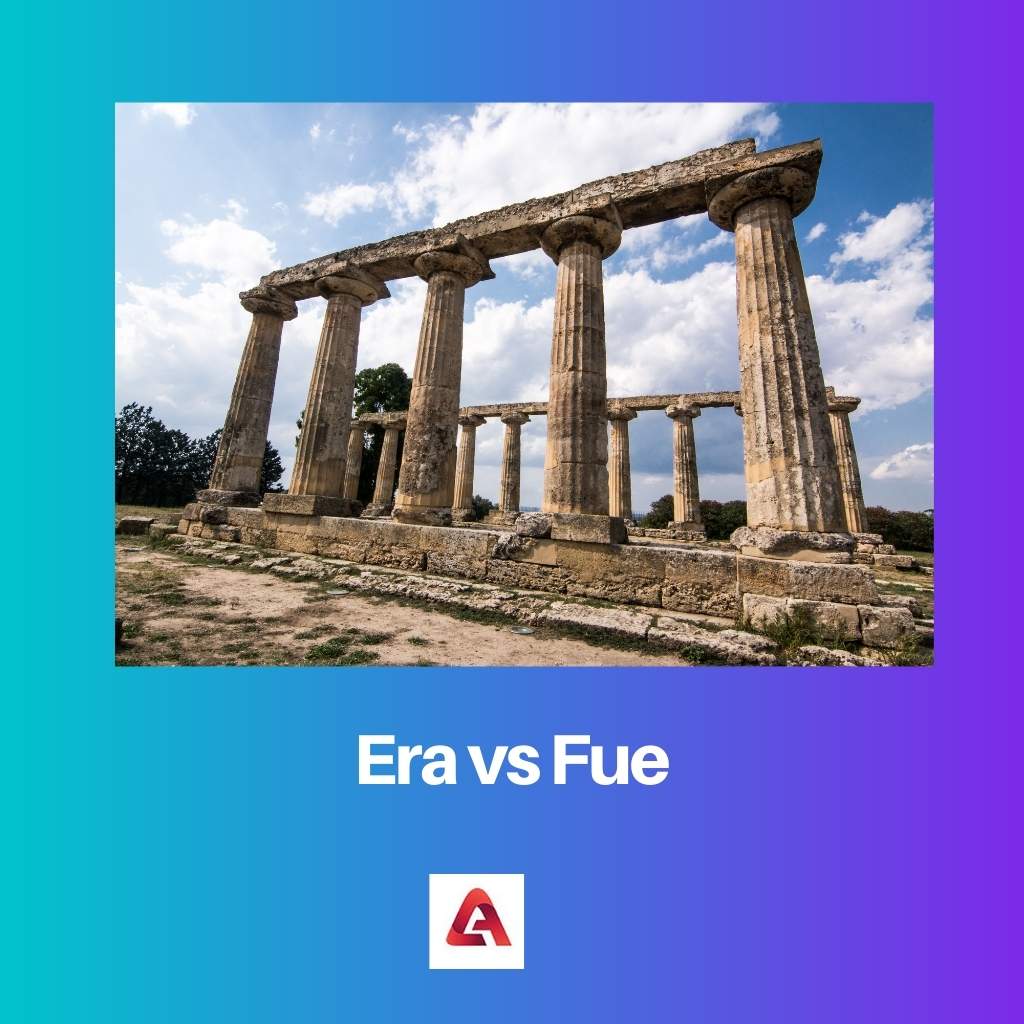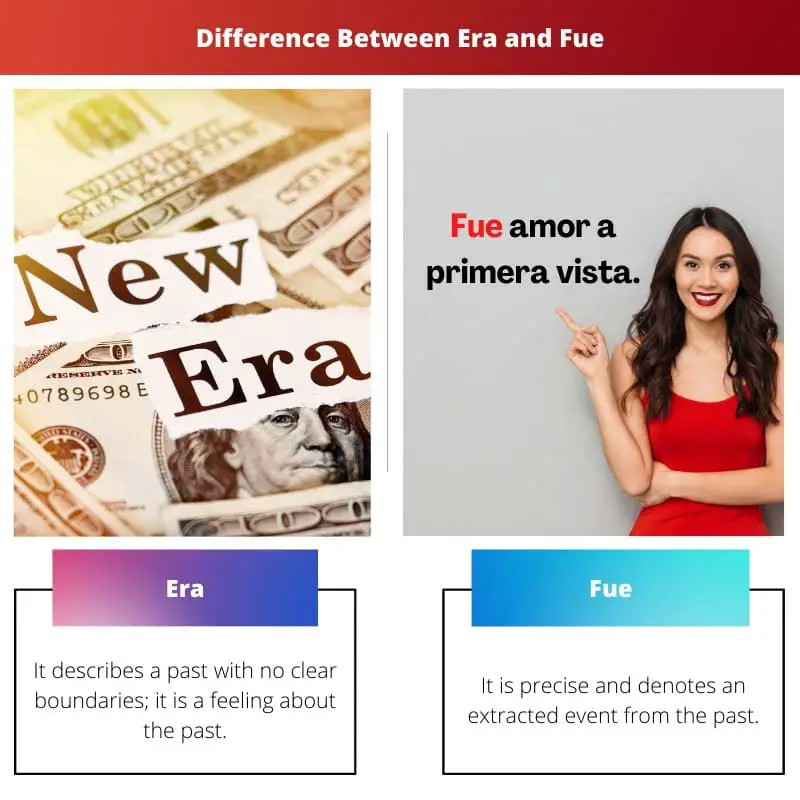“Era” is the imperfect tense, indicating ongoing or repeated actions in the past. It is employed to describe background information, habitual actions, or states of being. For example, “Ella era una excelente estudiante” translates to “She was an excellent student,” expressing a continuous quality.
On the other hand, “fue” belongs to the preterite tense and is utilized for completed or one-time actions in the past. It is commonly employed to narrate specific events or actions that took place at a particular moment. An example would be “Ella fue a la tienda ayer” meaning “She went to the store yesterday,” denoting a singular, completed action.
Key Takeaways
- ERA stands for Follicular Unit Extraction and Re-implantation, a hair transplant procedure that involves removing individual hair follicles from a donor area and transplanting them to the recipient area.
- FUE stands for Follicular Unit Extraction, a hair transplant procedure that involves removing individual hair follicles from a donor area and transplanting them to the recipient area.
- The primary difference between ERA and FUE is that ERA involves re-implantation of the extracted hair follicles, while FUE does not.
Era vs Fue
The difference between era and fue is that they denote different tenses. Fue belongs to the preterite tense, while era belongs to the imperfect tense. Both tenses refer to actions or incidents that occurred in the past and have come to an end. Their context is what separates them.

In Spanish, there are irregular verbs as well as regular verbs. One of the irregular verbs, ser, becomes era when conjugated in the imperfect tense. In Spanish, era refers to actions that depict a situation and its historical impact.
Yo era,’ for example, means ‘I used to be.’ This means, “How did you use to be?” It’s a broad statement about the past, not limited or specific.
The preterite tense of the irregular verb ser is represented by fue. Ser is one of the Spanish language’s irregular verbs. It refers to events that took place in the past.
It denotes a specific event that occurred in the past and was completed in the past, as opposed to the ‘era’. As if you had pizza the day before. As a result, you’ve already begun and completed the action.
Comparison Table
| Feature | Era | Fue |
|---|---|---|
| Verb Tense | Imperfect Past (Imperfecto) | Preterite Past (Pretérito) |
| Meaning | Used for ongoing or habitual actions in the past, descriptions, and states of being | Used for completed actions in the past with a definite beginning and end |
| English Equivalents | “Used to be,” “Was (habitual),” “Would be” | “Was (completed),” “Became” |
| Example | Cuando era niño, jugaba mucho en el parque. (When I was a child, I played a lot in the park.) | Ayer fui al cine. (Yesterday I went to the movies.) |
What is Era?
In Spanish grammar, the term “era” refers to the past tense form of the verb “ser,” which means “to be.” It is specifically used to describe or express actions, conditions, or states that occurred in the past. “Era” is part of the imperfect tense, and its conjugation depends on the subject of the sentence.
Conjugation of “Era”
The conjugation of “era” varies based on the subject pronoun. For example:
- Yo era (I was)
- Tú eras (You were, informal singular)
- Él/Ella/Usted era (He/She/You(formal) were)
- Nosotros/Nosotras éramos (We were)
- Vosotros/Vosotras erais (You all were, informal plural)
- Ellos/Ellas/Ustedes eran (They/You all(formal) were)
Expressing Past Habits or Background Information
One primary use of the imperfect tense with “era” is to describe ongoing or repeated actions in the past. It is often employed to provide background information, set the scene, or express habitual actions. For instance: “Cuando era niño, jugaba en el parque todos los días” (When I was a child, I used to play in the park every day).
Describing Characteristics or Conditions
The imperfect tense with “era” is also utilized to portray physical or emotional states, characteristics, or conditions in the past. It serves to create a narrative atmosphere. For example: “La casa era grande y acogedora” (The house was big and cozy).
Narrating in the Past
When telling a story or narrating events that happened in the past, “era” is commonly employed to set the stage or describe the background details. This helps create a vivid and immersive narrative. An example could be: “Era un día soleado de verano cuando conocí a Juan” (It was a sunny summer day when I met Juan).
Contrasting “Era” with Other Past Tenses
It’s essential to distinguish “era” from other past tenses in Spanish, such as the preterite. While the preterite is used for completed and specific past actions, the imperfect with “era” focuses on ongoing, habitual, or background situations.

What is Fue?
Fue is the past tense form of the Spanish verb “ser,” which means “to be.” This verb is crucial in expressing identity, characteristics, origin, and other essential qualities. In its past tense form, fue is utilized when referring to events, situations, or states that occurred in the past.
Conjugation and Usage
Conjugation of Fue
The conjugation of fue is specific to the third person singular (él/ella/usted) in the past tense. It is often used to describe a singular action or state that took place in the past.
Example Sentences
- Él fue a la tienda. (He went to the store.)
- Esa película fue emocionante. (That movie was exciting.)
Alternative Use in the Preterite
While fue is the past tense of “ser,” it is essential to note that the verb “ser” has a distinct past tense conjugation. In certain situations, the preterite tense of “ser” (fui, fuiste, fue, fuimos, fuisteis, fueron) may be used instead of fue to convey a more specific past action or event.
Historical and Literary Context
Literary Examples
In literature, fue is often employed to narrate events or describe circumstances in the past. For instance, classic Spanish literature frequently uses this form to depict historical settings and characters.
Historical Significance
In historical contexts, fue serves as a linguistic bridge connecting modern Spanish speakers to the events of the past. It encapsulates the richness of historical narratives and adds depth to the understanding of previous generations.
Common Mistakes and Clarifications
Common Errors
One common mistake learners make is confusing fue with the past tense of another verb, “ir” (to go), which is fui, fuiste, fue, fuimos, fuisteis, fueron. Clearing up such distinctions is crucial for accurate communication.
Clarification on Usage
It is important to clarify that fue is not interchangeable with the past tense forms of other verbs, even if they may appear similar. Each verb in Spanish has its unique conjugation in the past tense, and understanding these differences is fundamental for grammatical accuracy.
Main Differences Between Era and Fue
- Era:
- Used for singular and third-person plural past actions or states.
- Examples: “Yo era estudiante” (I was a student), “Ellos eran amigos” (They were friends).
- Typically indicates a more continuous or habitual past action.
- Fue:
- Used for singular and third-person singular past actions or states.
- Examples: “Él fue a la tienda” (He went to the store), “Ella fue médica” (She was a doctor).
- Often denotes a specific, completed event or a change in state.




